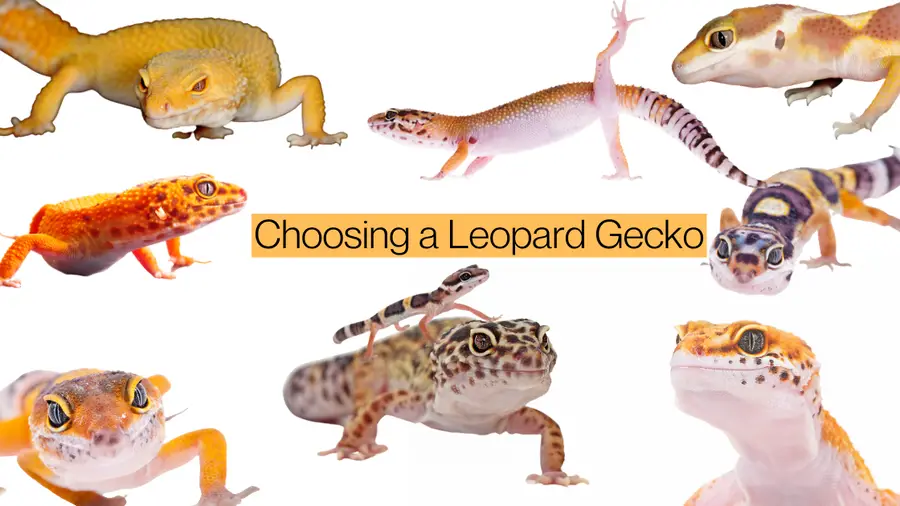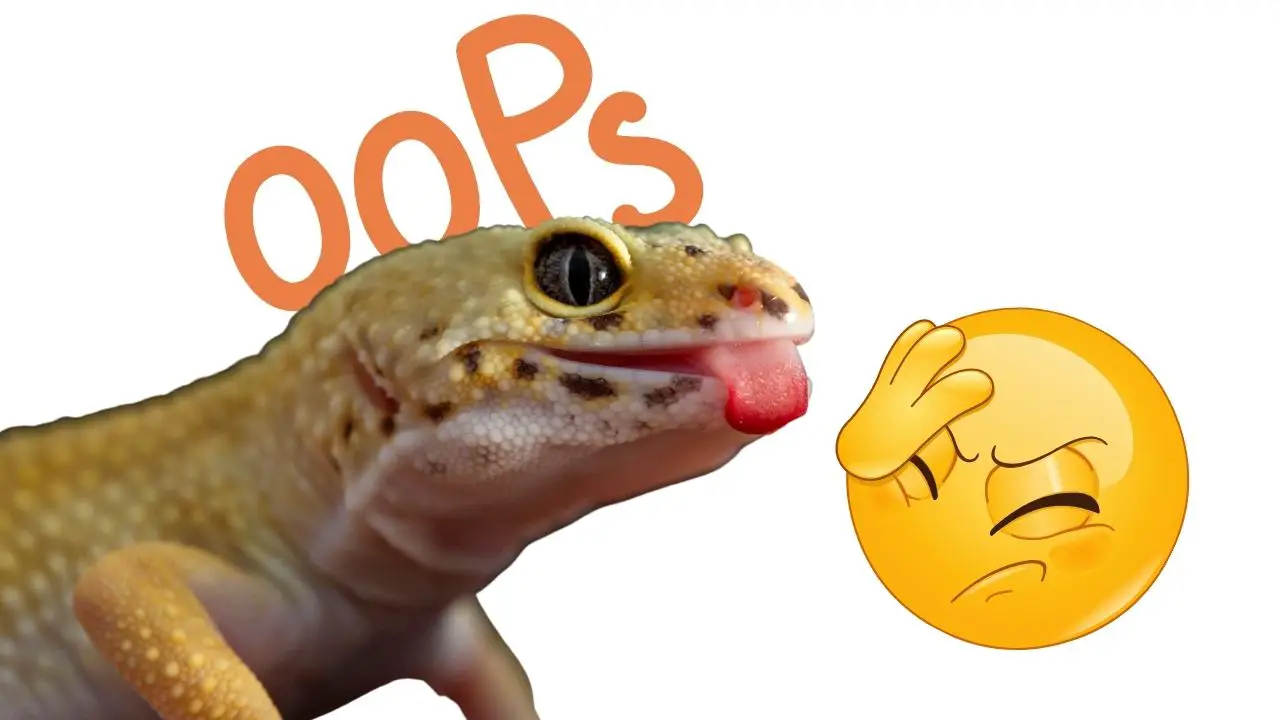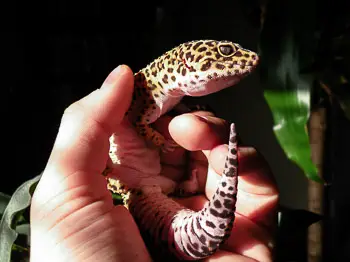So you’ve decided you want to get a leopard gecko. They are one of the most popular reptiles kept as pets, and are a great choice.
When buying a leopard gecko, there are some things to consider to make sure you choose one that’s right for you. In this post, we’ll outline things to consider to make both you and your pet happy.
Normal or Morph leopard gecko
First, you should have an idea of what kind of leopard gecko you’d like. Most leopard geckos you’ll see, especially in large pet shops, are considered “normal” leopard geckos. This is the type of leopard gecko you’d typically see in the wild, or in many chain pet shops. They’re usually yellow with black spots as befitting of their name, like this guy:

Breeders and leopard gecko enthusiasts have used selective breeding to develop morphs. You can think of a morph as a designer leopard gecko. They may have striped instead of spots, or no markings at all. They may be more orange in color, or grey or black. There are several varieties of albino leopard geckos.
You can learn more about the science and genetics behind morphs or the kind of morphs available here.
Explore the options and get an idea of what you’d like, and understand it may ultimately come down to availability (and price – some morphs are expensive!)
Related Post: How Much Does a Leopard Gecko Cost?
Do you want a baby or adult leopard gecko?
How old will your leopard gecko be? If you opt for a hatchling or juvenile, you have the benefit of spending the maximum amount of time with your leopard gecko, and you know its history and can make sure it is loved and well cared for. Also keep in mind a leopard gecko’s pattern changes from birth to adulthood, so you won’t fully know what a juvenile leopard gecko will look like as an adult.
Adult leopard geckos are more difficult to accurately determine their age. Once leopard geckos reach their full size, they don’t change much. Depending on where you get your gecko, you may be able to get its full history or hardly any details at all.
Related Post: Baby Leopard Gecko Care
Will you purchase your gecko In person or online?
You’ve got some options when finding where to buy a leopard gecko. Are you planning to buy your gecko in person, or order it online?
Ordering online you’ll have access to a larger variety, especially if you’re looking for a specific type of morph. Online may be a bit pricier, and you need to factor in shipping (both the added cost and getting your pet safely to you.) For a reputable online dealer, check out CBReptile for live leopard geckos and reptiles (affiliate link.)
If you opt for in person, you can look at local pet stores. We’d recommend a privately owned pet store or breeder, as the reptiles generally receive more individual care than in big chain stores. You could also see if there is a leopard gecko breeder in your area. Reptile expos are also a great way to see your gecko in person before you buy.
Signs of a healthy leopard gecko
- Bright eyes
- Active
- Fat tail
- No loose shed
- Clean
Warning signs of a sick leopard gecko
- Labored breathing
- Breathing with the mouth open
- Missing Toes
- Rubbery or malformed legs
- Difficulty walking
- Skinny or “stick” tail
- Dry shriveled tail tip (tail rot)
- Crud around eyes, nostrils, or mouth
Things to look for when choosing a leopard gecko
A healthy gecko should have a bit of meat on its bones. You should not be able to see the tailbones, hip bones, or vertebrae through the skin. If you can clearly see the bones outlined in the skin, this is a sign of a sick or malnourished lizard.
Watch the leopard gecko walk. Does it walk easily and smoothly with its body up off the ground? Is it dragging or favoring a leg?
Are the legs misshapen or a bit rubbery looking? This may be a sign of metabolic bone disease, or MBD, where the bones have not properly formed.
Look at the toes. Are they all there? Check for old shed skin that may be binding a foot or toes. When shed skin gets stuck on the toes, it restricts blood flow, causing the toes to wither and fall off.
Watch the gecko breathe. Are the breaths easy, or does it exhale heavily or hang its mouth open. This could be a sign of respiratory infection. Mucus or crud around the nostril could also indicate respiratory problems.
If the gecko you’re considering is in a tank with other geckos, look at the rest of the group. Are there sick looking geckos in the tank (or in the store)? If so, even a healthy looking gecko in the same tank may have been exposed to parasites or disease if it’s kept with a sick lizard.
Related Post: Is My Leopard Gecko is Sick
Rescue and Leopard Geckos
Don’t buy a leopard gecko just because you feel sorry for it. Not only are you potentially setting yourself up for some trips to the vet (and the associated bills and cost), you’re rewarding the pet store for poor care of their animals. If you notice sick lizards in the store, notify the staff and consider taking your business elsewhere.
It’s commendable to rescue unwanted or mistreated pets. If you connect with an animal in distress, that’s great. Be sure you know what you may be committing to by taking in a sick animal, and make sure you are able to provide the necessary care.
Before you buy a leopard gecko
Make sure you have the proper setup to house your leopard gecko (and have it ready before you bring your gecko home.) It will need an adequately sized enclosure and heat to survive. You’ll want to make sure it has some places to hide and feel comfortable. Check out our post 9 things to know before getting a leopard gecko to get you started.
You can read about the essential things your leopard gecko needs or check out our setup and gear guide for more information.
Wrap up: How to choose a leopard gecko
When buying a leopard gecko, there are many decisions to make. Do you want a normal leopard gecko, or a morph? How much do you want to spend? Where will you get it? How do you know it’s healthy?
After reading this post, we hope you’re better informed and know what to consider and what to look for. Happy hunting, and we wish you and your gecko the best!






